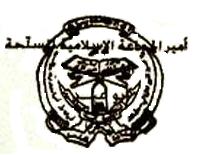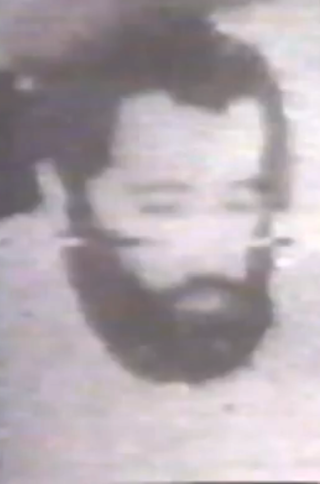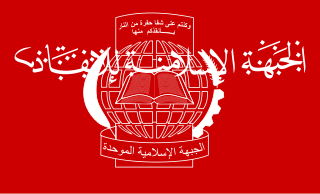
The Armed Islamic Group was one of the two main Islamist insurgent groups that fought the Algerian government and army in the Algerian Civil War.

The Islamic Salvation Front was an Islamist political party in Algeria. The party had two major leaders representing its two bases of its support; Abbassi Madani appealed to pious small businessmen, and Ali Belhadj appealed to the angry, often unemployed youth of Algeria.

In the village of Bentalha, located 15 km (9.3 mi) south of Algiers, an incident occurred on the night of 22–23 September 1997, where a significant number of villagers lost their lives due to the actions of armed guerrillas. According to Amnesty International, over 200 villagers were killed. Different sources have reported varying numbers of deaths, with estimates ranging from 85 to 400 to 417.
The Rais massacre, of August 28, 1997, was one of Algeria's bloodiest massacres of the 1990s. It took place at the village of Rais, near Sidi Moussa and south of Algiers. The initial official death toll was 98 people killed and 120 wounded; CNN said that hospital workers and witnesses gave a toll of at least 200, and up to 400. The figure given by the Algerian government to the UN Commission on Human Rights was 238. The BBC later quoted the figure of 800 killed.
The Beni Messous massacre took place on the nights from September 5 to 6 September 1997, in Sidi Youssef, a working-class area in the town of Beni Messous. At least 84 people were killed.
The Sidi-Hamed massacre took place on the night of January 11, 1998, in the town of Sidi-Hamed, 30 km south of Algiers. An estimated fifty gunmen participated, attacking children and adults; they bombed a café where films were being watched and a mosque in nearby Haouche Sahraoui, killing those who fled, and entered houses to kill those within. According to official figures, 103 people were killed and 70 injured, including two pro-government fighters and five of the attackers. Other sources indicate a higher toll; AFP supposedly counted over 120 corpses, and some Algerian newspapers claimed 400. Thirty girls were reportedly kidnapped. The massacre was generally blamed on the Armed Islamic Group of Algeria (GIA). One newspaper claimed that survivors blamed it on the Islamic Salvation Front (AIS).
The Wilaya of Relizane massacres of 30 December 1997 were probably the single bloodiest day of killing in the Algerian conflict of the 1990s. Several members of the population of four villages were killed; the exact number of casualties has varied according to source.
The Oued El-Had and Mezouara massacre took place on August 2, 1997. This massacre occurred between two villages near Arib in the wilaya of Tipaza and Ain Defla, Algeria. Around 100 people were killed as a result of the massacre. This massacre was one of the bloodiest since the start of terrorism in Algeria. Algeria-Watch's timeline describes them as strange guerrillas with shaven heads and eyebrows, carrying flags emblazoned "al-ghadhibun 'ala Allah".

The Algerian Civil War, known in Algeria as the Black Decade, was a civil war fought between the Algerian government and various Islamist rebel groups from 11 January 1992 to 8 February 2002. The war began slowly, as it initially appeared the government had successfully crushed the Islamist movement, but armed groups emerged to declare jihad and by 1994, violence had reached such a level that it appeared the government might not be able to withstand it. By 1996–97, it had become clear that the Islamist resistance had lost its popular support, although fighting continued for several years after.
The Organization of Young Free Algerians was a pro-government armed group that claimed credit for various attacks against civilians who sympathised with the Islamists during the Algerian Civil War. It was active mainly in 1994 and 1995. However, it was a front under which elements of the DRS, the Algerian security services, operated. OJAL never existed as an independent organisation.
Mustapha Kartali was the main Islamist guerrilla leader in the Larbaa region during the Algerian Civil War.

Mustafa Bouyali was the leader of the Algerian Islamic Armed Movement, a guerrilla group based around Larbaa south of Algiers, from 1982 to 1987.
The Algerian Civil War was an armed conflict in Algeria between the Algerian Government and multiple Islamist rebel groups, sparked by a military overthrow of the newly elected Islamist government. The war lasted from December 1991 until February 2002, though in the south of the country an Islamist insurgency remains ongoing.

Abdelkader Hachani was a leading figure and founding member of the Islamic Salvation Front, an Algerian Islamic party.
The Sant'Egidio Platform of January 13, 1995 was an attempt by most of the major Algerian opposition parties to create a framework for peace and plan to end to the Algerian Civil War. The escalating violence and extremism, which had been provoked by the military's cancellation of the legislative elections in 1991 that the Islamic Salvation Front (FIS), an Islamist party, were expected to win, compelled the major political parties to unite under the auspices of the Catholic Community of Sant'Egidio in Rome. The community had previously played an important role in the drafting of the Rome General Peace Accords in 1992 which ended the civil war in Mozambique. The presence of representatives from the FIS as well as the National Liberation Front (FLN) and Socialist Forces Front (FFS) at these negotiations was extremely significant; the three parties collectively accounted for 80 per cent of the votes in the 1991 election.

The Islamic Salvation Army was the armed wing of the Islamic Salvation Front, which was founded in Algeria on 18 July 1994. It was ordered to dissolve by the Supreme Court of Algeria in 1992. Since then, many of its members have either been arrested or forced into exile. The army had about 4,000 men in western and eastern Algeria, and later 40,000 men in 1994. It pledged allegiance to imprisoned FIS leaders Abbasi Madani and Ali Benhadj. It was supported by Libya and Saudi private donors, and allegedly by Morocco and Iran.
Major General Smain Lamari was the head of an Algerian intelligence service, the Department of Counter-Espionage and Internal Security.
Mohamed Salah Sid, is an Algerian-born British radio broadcaster, producer and voice-over artist who has worked for the British Broadcasting Corporation in the United Kingdom for most of his career.

The Islamic Armed Movement was an Islamic guerrilla group and terrorist organization in northern Algeria in the 1980s and 90s. The group was the largest and most broadly-based Algerian Islamic extremist organization of the 80's. The group was founded by Mustafa Bouyali in 1981 or April 1982 or July 1982 after a confrontation with security services. The group, which carried out attacks against the government in the Larbaa region, was a loose association of small groups of which Bouyali proclaimed himself the emir. The group engaged in guerrilla warfare similar to the Maquis of WWII, and was based in the rural areas of the Atlas Mountains and the Blida District as it provided the ideal terrain for extremist groups, specifically targeting the Mitidja. Bouyali originally was a preacher at the El-Achour Mosque in Algiers where he had gained a following. In 1979 or 81' he formed the Group for Defense Against the Illicit, pressuring the government to implement Islamic law and to adopt policies that reflected "real" Muslim values. This group attacked bars and individuals, but had no real power, so Bouyali decided to turn to armed struggle. He was relentlessly harassed by security services though, due to his speaking out against the regime and his support for an Islamic state.
The Tamesguida offensive was an Algerian army offensive against the Armed Islamic Group's stronghold of Tamesguida from 15 to 16 February 1997 during the Algerian Civil War. It took place in the north east region of Tamesguida in Médéa province when an Algerian army offensive using helicopters and ground troops killed more than 60 rebels.






